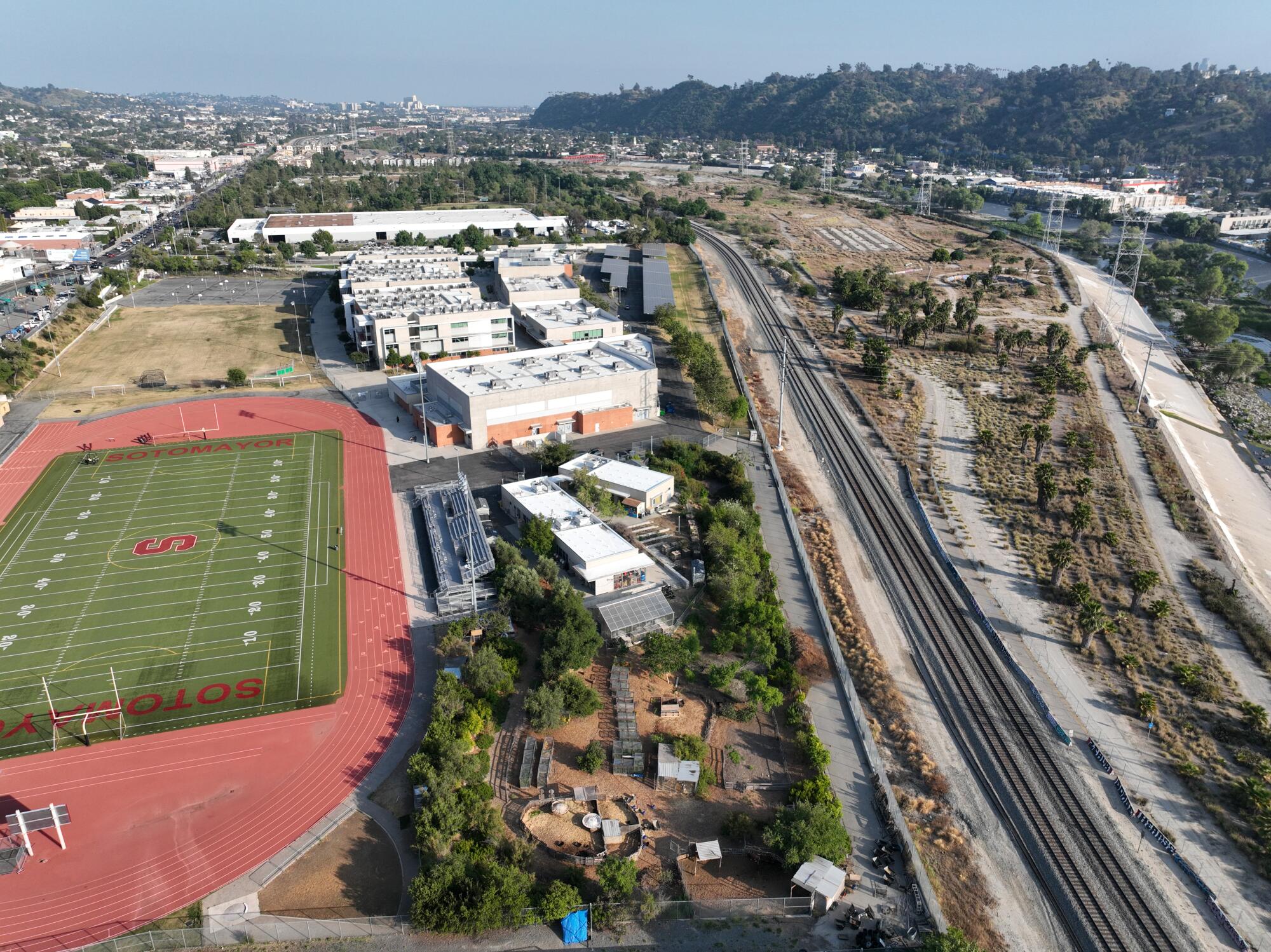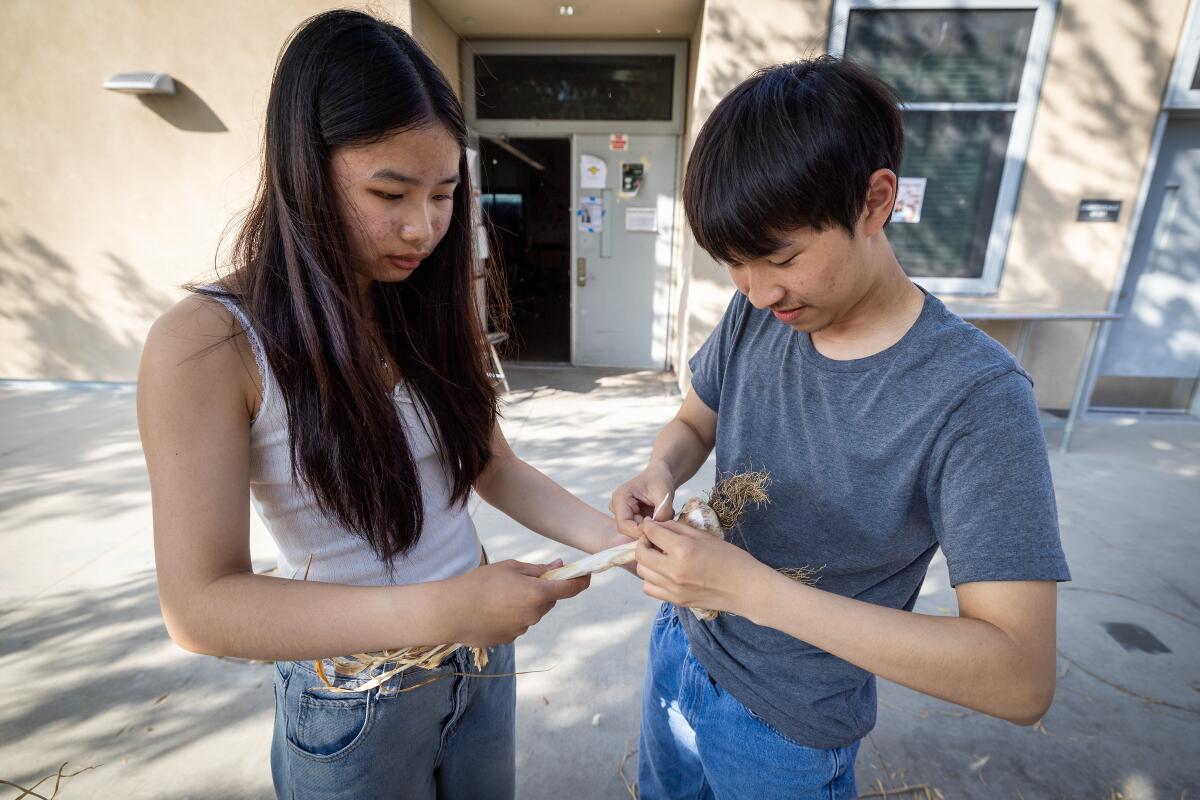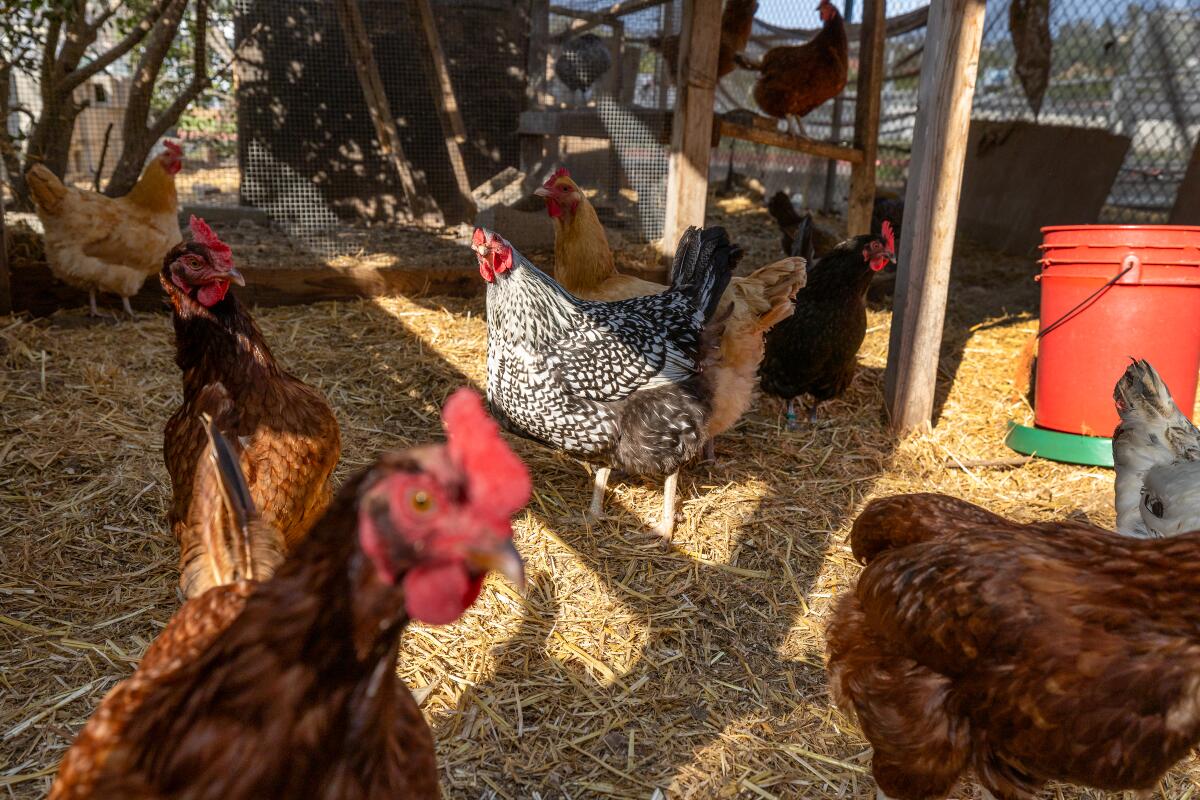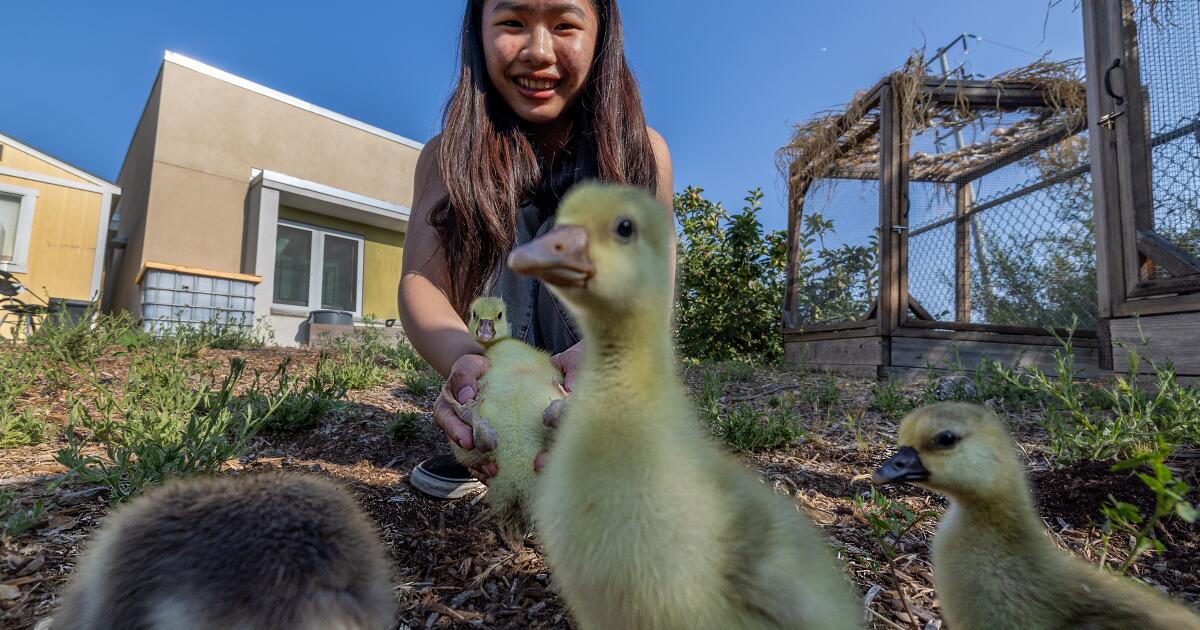You might miss it when you’re driving by, but there’s a 1.75-acre farm wedged between the football field and active Metro and freight train tracks at the back of the Sotomayor Arts & Sciences Magnet High School campus in Glassell Park.
A herd of Irish Dexter cows, a passel of New Zealand Kunekune pigs, Babydoll Southdown sheep and assorted feathered fowl are just part of the menagerie living among fruit trees, vegetable gardens and lush native plants along a swale to capture rainwater.
“Agriculture can reset natural ecosystems and become part of the solution to climate change,” said Reies Flores, the agriculture educator at Sotomayor’s Career and Technical Education (CTE) program. The agriscience program is separate from the rest of the academic curriculum.

The farm at Sotomayor Arts & Sciences Magnet High School.
(Allen J. Schaben / Los Angeles Times)
Raising endangered breeds is a lesson in the importance of biodiversity, he said. The first discussion topic of each semester’s urban farm-to-table class is the climate impact of eating meat, he said. “Students connect with the animals as other sentient beings.”
When the Los Angeles Unified School District opened the grades 6 to 12 school in 2011, agriculture was in the curriculum plan, a vestige of the region’s farming past. But the project languished until the arrival of Flores and his teaching partner, Arturo Romo, an artist who works with natural dyes and fibers.
Flores said CTE prepares 230 students each semester for careers — students who are more likely to graduate to jobs with environmental groups than industrial agriculture companies.

Our Climate Change Challenge
Creating their own curriculum
California wants climate education for its students. Meet some of the teachers, schools and nonprofits making it happen.
With a free hand from the administration to run the farm as he sees fit, Flores is teaching students organic, sustainable gardening practices that emphasize working in concert with nature. “It’s regenerative agriculture,” he said, which can repair the environment and protect it from climate change.
Students add cow dung to food scraps from class and the school cafeteria to create compost that builds soil for the gardens. They learn how the farm’s pigs eat everything — including leftover milk — and do the composting job themselves as they root around their straw beds.
Class time is spent working on the farm, said Flores, who initially works beside his students, talking through whatever task is at hand. “Water only what you eat,” he tells them. “Waste is a resource.”
The farm animals are part of the teaching plan, not the dining plan. The farm-to-table cooking class is vegetarian.
Students run the place, said Flores, cultivating the gardens and caring for the animals themselves. “I step back and let them do it once I see they’ve gotten the hang of things.”
1

2

1. Michelle Chan and her brother, Harry Chan, tie together onions for drying at Sotomayor Arts & Sciences Magnet. 2. Chickens roam around the coop on campus. (Allen J. Schaben / Los Angeles Times)
Mastery of the work, he said, is a better measure of what they’ve learned than any written test.
“These kids have a lot on them,” Flores said. There are 516 students at the Title I school, and 95% qualify as economically disadvantaged. “Within the boundaries of the school, they’re doing so much work,” he continued. “The farm allows them to learn and become accomplished in a way that’s different. That’s good for your special education student and it’s good for your honor roll student.”
Flores raises money to cover the cost of the program and says he’s spent an estimated 100 hours of personal time over the last three years applying for the local, state and federal grants that sustain the farm. Among them is an annual Perkins grant, ranging from $25,000 to $60,000 annually, “a competitive grant funding instructional materials and equipment for the program,” he said.
“If the district nurtured spaces like ours as ‘climate literacy learning,’ and gave teachers the tools they need to teach it, it would help a lot,” Flores said.
Some teachers use the farm as a lab for special projects. Social studies classes reading books by Michael Pollan, who has an “eat food, not too much, mostly plants” philosophy, have come to the farm to see his principles in action, Flores said.
Romo, Flores’ teaching partner, connects the farm lessons to his Chicano heritage. “I was raised with reverence for the Earth,” he said. “We’re of the Earth and so we take care of it. And it takes care of us.”
Students learn “about the connections between the ecology of the farm and their own history,” Romo added. “How their history connects with the willows on our farm and the history of Indigenous people here. And then how to treat the Earth with respect.”
